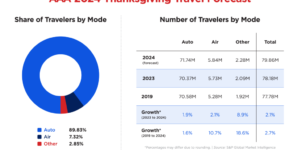 Terrorism insurance markets should remain stable even as threats rise and the types of attacks have continued to evolve. That’s thanks to a nimble and proactive industry, Marsh asserts in a new report assessing the risk in 2018.
Terrorism insurance markets should remain stable even as threats rise and the types of attacks have continued to evolve. That’s thanks to a nimble and proactive industry, Marsh asserts in a new report assessing the risk in 2018.
“Overall property terrorism insurance capacity is abundant, and barring unforeseen changes, is likely to remain stable in 2018, backed by new entrants and a commitment by incumbents to underwrite the risk,” Marsh said in its report. “Although attacks continue, insured losses have been limited in frequency and pricing.”
One reason for that involves plenty of proactive responses from insurers in different markets seeking to keep their coverage current and sensible.
For Tier 1 cities, for example, insurers tend to require higher pricing and continue to scrutinize central business districts to keep up on current events and issues. This involves cities where the perceived risk of terrorism is higher and insurers have “significant” liabilities: New York, London, Frankfurt, Toronto, Singapore, Chicago, Los Angeles, Washington, San Francisco and other similar cities.
Insurers are also deploying capacity closer to buyers’ headquarters, such as London-based insurers establishing beachheads in the U.S. and Asia or adding resources to both areas. This lets them be more responsive and flexible to their clients’ evolving needs.
Political Violence, Cyber Cover Now Part of Terrorist Insurance Equation
The market has also responded as terrorism risks evolved. Marsh noted, for example, that more insurance clients are adding political violence coverage to their standard terrorism insurance coverage. Many have also seen the need to add cyber-related business interruption coverage at both owned and non-owned facilities, due to the potential of cyber-related terrorist attacks.
Being nimble, however, hasn’t been easy. Marsh points out that terrorism has evolved rapidly, with the emergence of lone wolf attacks and smaller groups seeking to hit soft targets. Other changes: terrorists have increasingly used vehicles as weapons, and cyber terrorist attacks have increased.
Marsh noted some trends and predicts many others in its report:
- While terrorism insurance capacity remains strong, pricing could increase due to global insurance cost upswings in response to 2017’s record catastrophe losses. January 2018 year-over-year pricing changes for most reinsurance program renewals including terrorism coverage were flat to 10 percent higher on a risk-adjusted basis.
- 62 percent of U.S. companies in 2017 purchased coverage embedded in property policies under the Terrorism Risk Insurance Program Reauthorization Act of 2015 (TRIPRA). That is a steady take-up rate since the extension passed. Northeast companies in the U.S. were most likely to buy terrorism insurance.
- Schools, health care organizations, financial insurers and real estate companies had the highest terrorism take-up rates by industry.
- Some buyers are trying to expand terrorism definitions in their insurance coverage to include active assailant events, as attack methods evolve.
- Capacity and competition for terrorism insurance is strong outside of the U.S., with underwriters offering innovative coverage.
- Workers compensation insurers are still considering employee concentration exposures as they price terrorism risk.
Marsh’s full report is the 2018 Terrorism Risk Insurance Report.
Source: Marsh





















 Cyber Threats, Climate and Business Interruption Risks Top Insurance Buyers/Sellers Concerns
Cyber Threats, Climate and Business Interruption Risks Top Insurance Buyers/Sellers Concerns  So…Where Are We Now? VC Viewpoint on InsurTech Funding Trends
So…Where Are We Now? VC Viewpoint on InsurTech Funding Trends  Safety Agency Says Rising Traffic Deaths a Growing Crisis in U.S.
Safety Agency Says Rising Traffic Deaths a Growing Crisis in U.S.  Bumps Ahead as Disruption Drives Changes in Auto Insurance
Bumps Ahead as Disruption Drives Changes in Auto Insurance 


